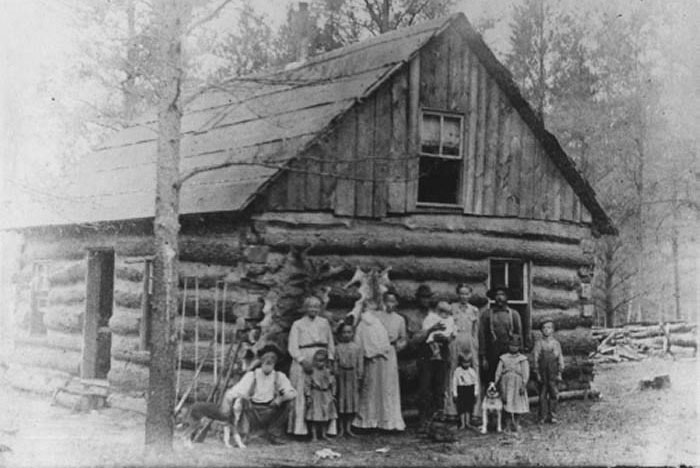
UNIQUE BOOKS for Tracing Frontier Roots in Virginia, West Virginia, & Tennessee
From the mid-18th to the mid-19th centuries, millions of Americans (both native- born and immigrant) abandoned the Tidewater region of Pennsylvania, Maryland, and Virginia for greener pastures. Since their predecessors had already claimed the best lands of the alluvial Tidewater, these families had little choice but to start their farms on the upland soil of the piedmont. Many eventually crossed the Appalachians for the great river valleys that awaited them on the other side of the mountains–in Virginia, the territory that would become West Virginia and Tennessee.
Listed below are seven publications containing vital genealogical information concerning the families that settled along the frontier in western Virginia–the portion of the Cavalier State that would become West Virginia–and Tennessee. If your ancestors established themselves or passed through this region, the chances are good that you will find one or more of them in these excellent reference books.
KEGLEY’S VIRGINIA FRONTIER | The Beginning of the Southwest. The Roanoke of Colonial Days 1740-1783
This is a mammoth work detailing the social, religious, and family life in southwest Virginia from 1730 to 1790. It contains biographical sketches and countless lists of land grants and deeds of conveyance identifying thousands upon thousands of settlers and their family members.
SIM’S INDEX | to Land Grants in West Virginia
A comprehensive guide to about 50,000 pre-1900 land records in West Virginia, SIMS INDEX lists land grants that were made by Lord Fairfax prior to the creation of the Virginia Land Office in 1779, as well as grants issued by the Commonwealth of Virginia for land now located in West Virginia, and by the state of West Virginia under its first Constitution.
SKETCHES OF PROMINENT TENNESSEANS | Containing Biographies and Records of Many of the Families Who Have Attained Prominence in Tennessee
As many as 259 prominent 19th-century Tennesseans are profiled in this extraordinary book. The biographical sketches include numerous details about the lives of the subjects and their families.
WEST VIRGINIA ESTATE SETTLEMENTS | An Index to Wills, Inventories, Appraisements, Land Grants, and Surveys to 1850
This index of wills and related inheritance records covers the 13 [West] Virginia counties that were formed before 1800. It contains the names of about 25,000 residents.
TRANS-ALLEGHENY PIONEERS | Historical Sketches of the First White Settlers West of the Alleghenies, 1748 and After (Temporarily out of print)
This work is, without question, one of the most celebrated accounts of life on the Virginia frontier ever written. The author’s focal point is the region of the New River-Kanawha in present-day Montgomery and Pulaski counties, Virginia. This book is essential reading for anyone interested in frontier history or the genealogies of mid-18th century families who resided in the Valley of Virginia.
THE BORDER SETTLERS OF NORTHWESTERN VIRGINIA | from 1768 to 1795, Embracing the Life of Jesse Hughes and Other Noted Scouts of the Great Woods of the Trans-Allegheny
This vast work contains the first explorations, settlements, and Indian wars, as well as notes, anecdotes, and biographies of the Border scouts and pioneers, with copious memoranda and remarks concerning the military careers–mostly Revolutionary–of numerous Border settlers. With judicious impartiality, the narrative surveys the depredations of Indians and pioneers alike, correcting a good many errors and misconceptions of previous writers.
THE REVOLUTION ON THE UPPER OHIO, 1775-1777
Based on the famous Draper Collection at the Wisconsin Historical Society, this transcription of original sources was conceived as a sequel to the Society’s volume on Lord Dunmore’s War of 1774. The documents selected by Thwaites and Kellogg pick up the story in March 1775 and continue through May 1777, essentially the first two years of the American Revolution. The sources shed light on the principal incidents and personalities of importance along the broad frontier that extended from the Greenbrier region of Virginia to Kittanning on the Upper Allegheny. The volume closes with the transfer of the command of Fort Pitt to General Hand, signifying a milestone in American military history and in the history of westward expansion.










